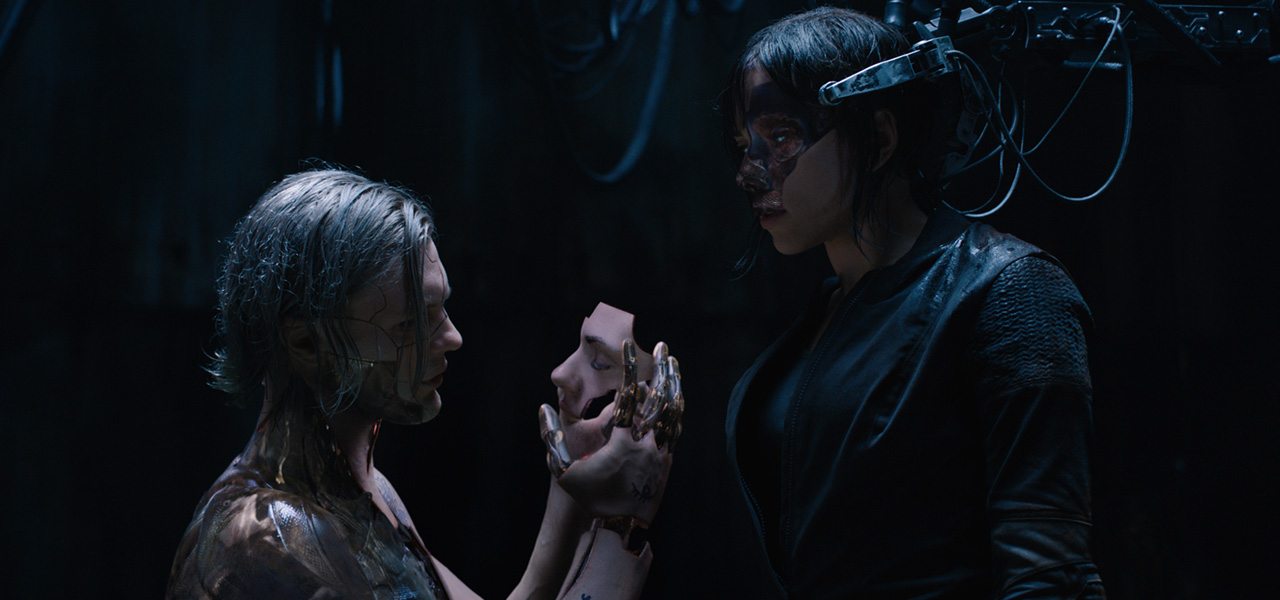
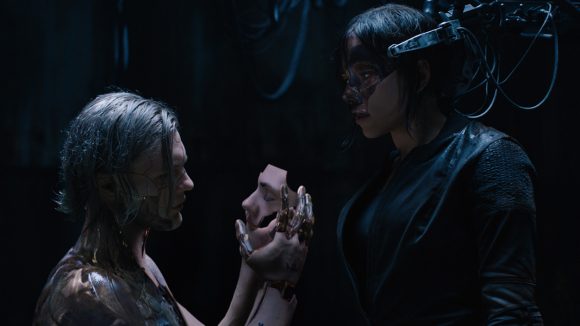
‘Ghost in the Shell’ Marks Another Step Forward for Live Action-CG Hybrid Actors
Just as we’re seeing more and more digital actors perform alongside real ones in blockbuster films – such as Tarkin and Princess Leia in Rogue One, or the cg Hugh Jackman stand-ins for his characters in Logan – there has also been of late an array of live action-cg hybrid performances on show.
Hybrid performances? Think Ex Machina’s Ava, played by Alicia Vikander, who then had cg robotic parts tracked and added onto her body in post production. Or Vision in the Avengers films, performed by Paul Bettany, who received a dose of digital facial augmentation from the visual effects crew.
The new live action Ghost in the Shell directed by Rupert Sanders continues this trend with Michael Pitt’s cyborg character Kuze. The actor portrayed the terrorist (or is he a savior?) on set, wearing various prosthetics and greenscreened make-up. Later, Pitt was augmented with panel lines on his face, cg body pieces, and cavities to suggest that he had been subject to various self-made repair jobs.
The idea with Kuze and those other characters, of course, is that the essence of the live action actor remains, and in fact is crucial in bringing the character to life (perhaps much in the same way that motion capture is intended to also achieve that). And like mocap, an incredible amount of effort is required in matching the live-action performance in cg and carrying out the digital augmentations to make the hybrid Kuze. Cartoon Brew talked to MPC’s production visual effects supervisor Guillaume Rocheron to find out more.
Finding the character
Kuze in Sander’s film is based on Hideo Kuze from the original Ghost in the Shell manga and anime canon on which this 2017 outing is based. He is the film’s villain and at odds with the main character, The Major (Scarlett Johansson). Both, however, are cyborgs, although unlike The Major, Kuze is anything but perfect.
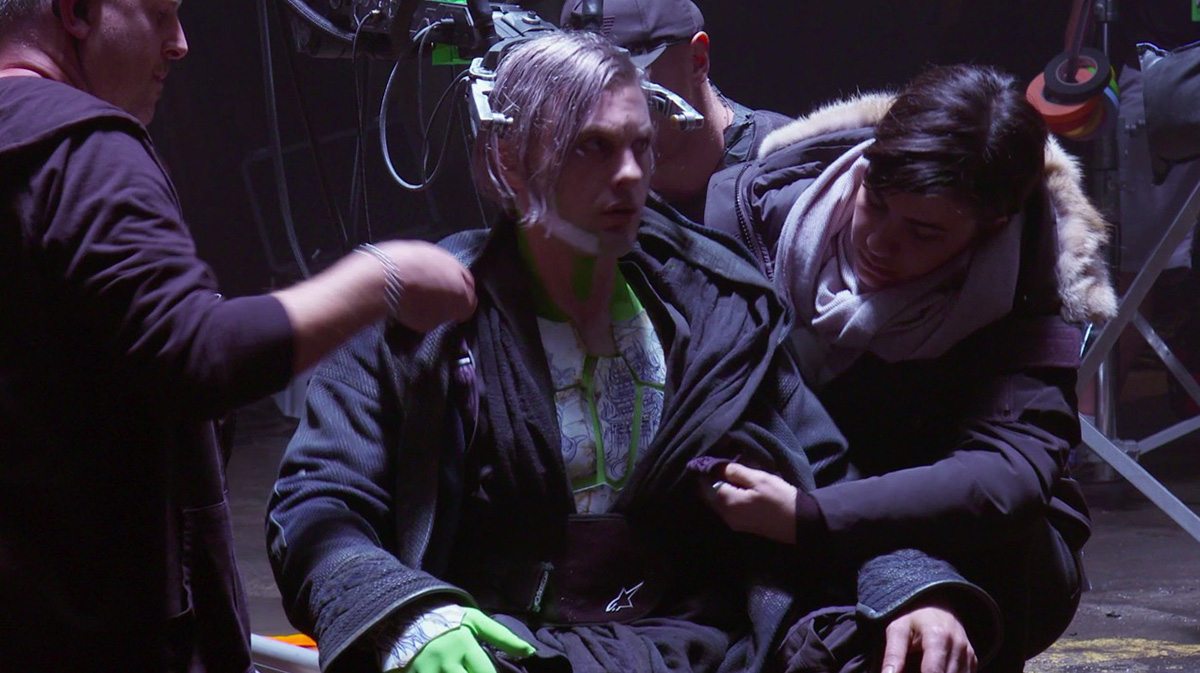
Instead, said Rocheron, who shared visual effects supervisor duties with John Dykstra, “Kuze is the version of The Major that was unsuccessful. His body is basically incomplete. He has a real brain, but a cybernetic body, except that the cybernetic body got completely discarded and is missing skin plates. It’s almost like he escaped the lab as just a skeleton with some muscles, and then over years in the underground world he found spare parts of other cyber bodies to recreate his own body.”
Immediately, that background to the character ensured Kuze would require very particular design challenges. He was, says Rocheron, always imagined as a mix of prosthetics and cg. Practical effects vendor Weta Workshop designed a set of ceramic-like plate prosthetics that ran down Pitt’s face and neck. The actor also wore greenscreen pieces with the intention of the character’s innards being visible beyond his face and body.
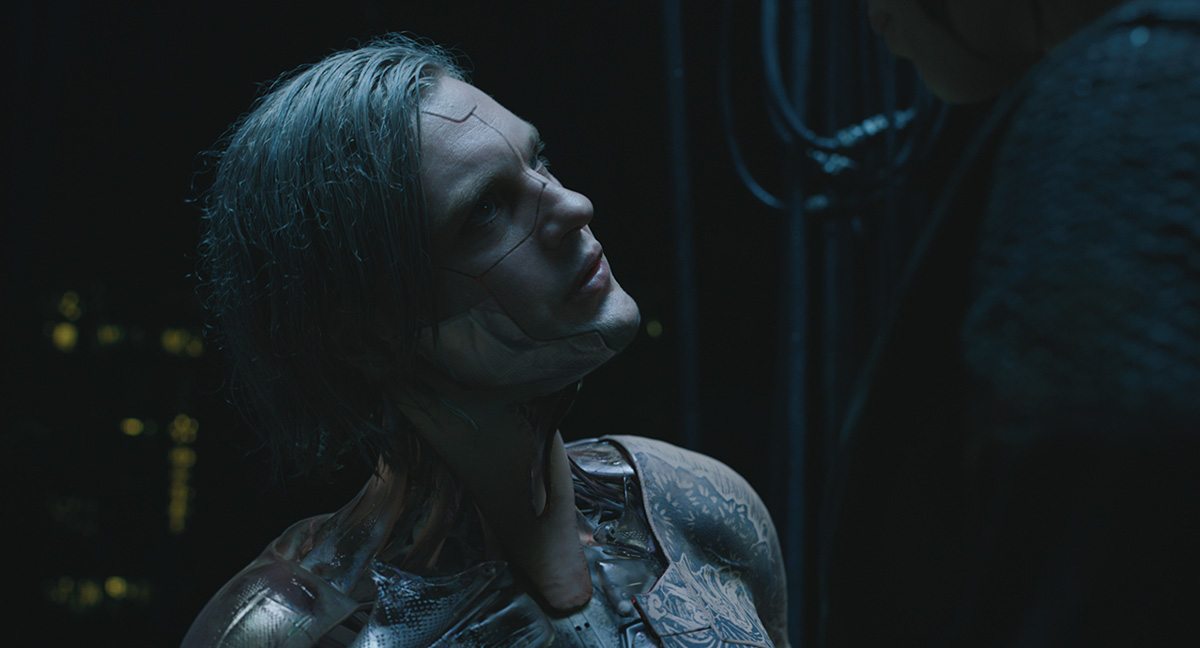
Equipped with these practical elements during filming, Pitt could perform as Kuze knowing that a level of augmentation would be added later. Importantly, said Rocheron, the digital work was only ever ‘on top’ of Pitt’s original acting. “We basically shot it as if we were just going to replace some parts of his body,” the visual effects supervisor said. “We never really re-animated his performance. Michael really did embrace the character quite a lot and so it’s not like we had to change the performance.”
The vfx approach
Visual effects artists from MPC (overseen by visual effects supervisors Axel Bonami and Arundi Asregadoo) commenced a major effort involving meticulous roto-mation of Pitt’s face and body, and a re-creation of almost everything from his torso up. The final look would feature a mix of real body parts and skin and an intermingling of muscles, robotic pieces, and levels of translucency and transparency in Kuze’s coverings.
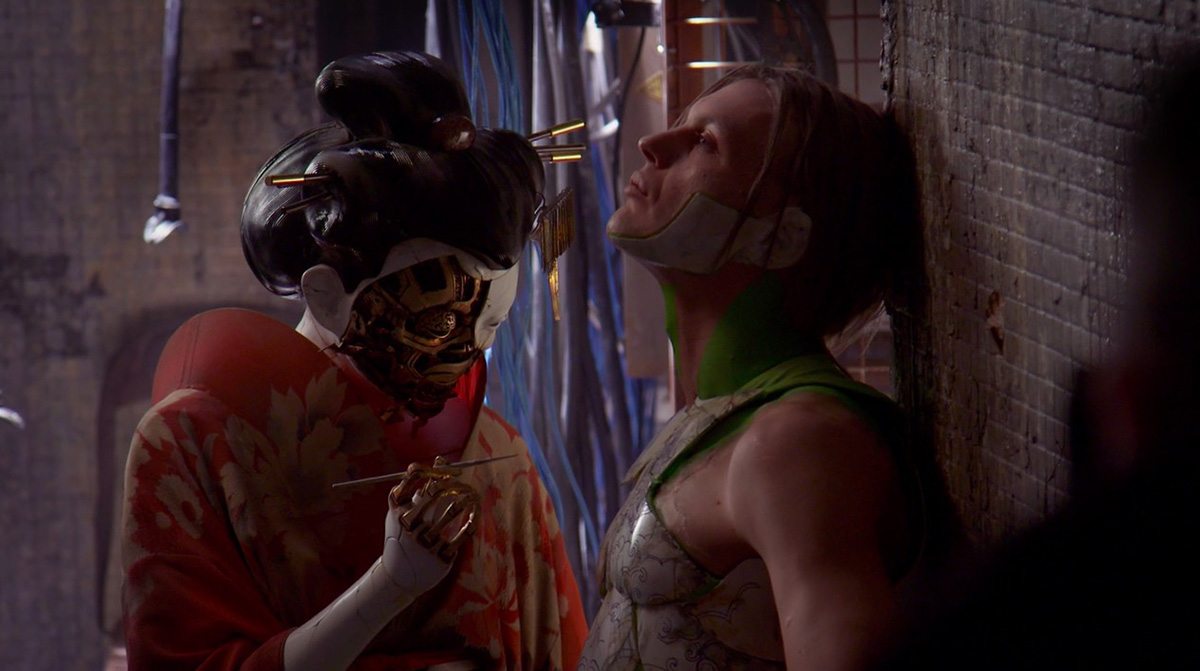
This included generating ‘negative space’ to see into Kuze’s muscle and skeleton areas. “In post we realized we could push the design even further, so we ended up sometimes just keeping his real eyes, the real mouth, and the real hair,” said Rocheron. “His face is split; it’s like the panels of his face are not completely assembled yet.”
One of the biggest challenges MPC found in realizing the hybrid Kuze was how cyborg-like he should look, especially in how much his ‘insides’ were visible. “There are some angles where you see through his muscles and see the shape of the skeleton,” noted Rocheron. “We created a lot of negative space so it’s as if he really has a pretty hollow shape. He’s basically put himself together, so it’s not designed to look pretty, because it’s whatever he could find to somehow resemble a human shape.”
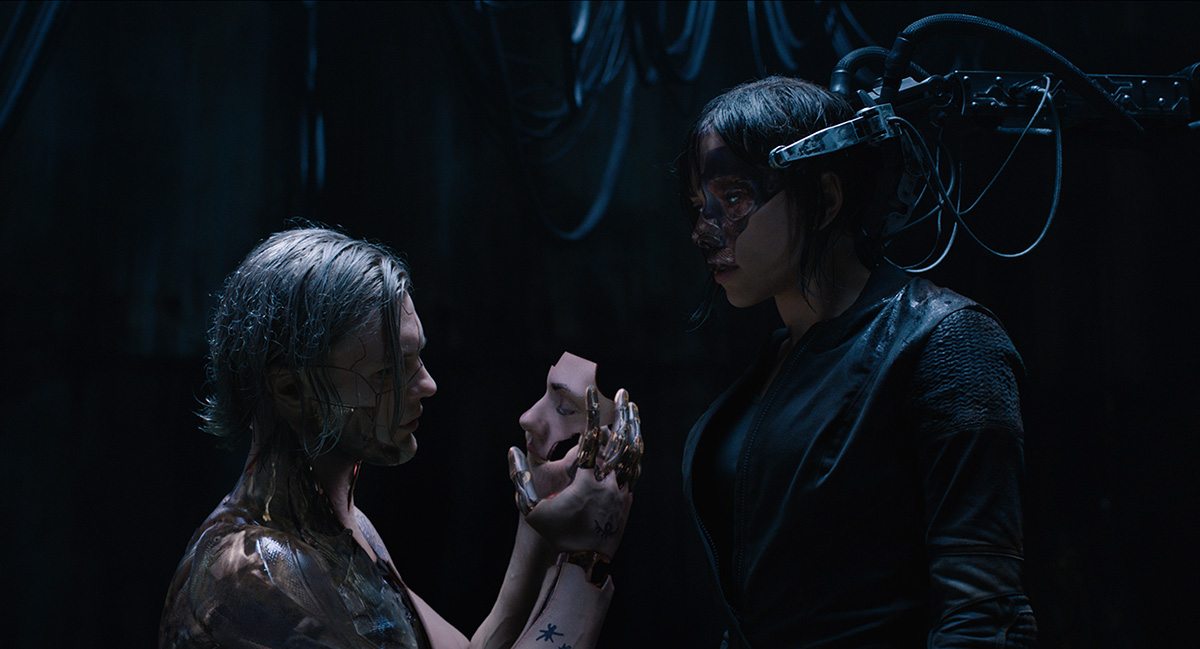
A hybrid future
The augmentation of actors to create hybrid characters is perhaps nothing new. Before digital methods were available, it had been happening with make-up and prosthetic effects for decades (in fact, the film is filled with several practical effects and make-up solutions). Could Kuze have been realized only with prosthetics, say? Some parts of him, perhaps. But the existence of negative space and the ability to see his innards would have certainly required a complicated – and expensive – articulated on-set puppet to be built for shooting. CG techniques, on the other hand, enable decisions about character design to be revised and re-considered to help tell the story.
CG hybrid characters, too, can take advantage of huge advancements in digital tracking, rendering, and compositing to achieve greater levels of photorealism and believability. Ultimately, though, whether the effects are practical or digital, they still need to lean on the actor’s original performance to accomplish a true hybrid character. It’s clear that the vfx work for Kuze throws back to Michael Pitt the whole time, right there in the frame.
